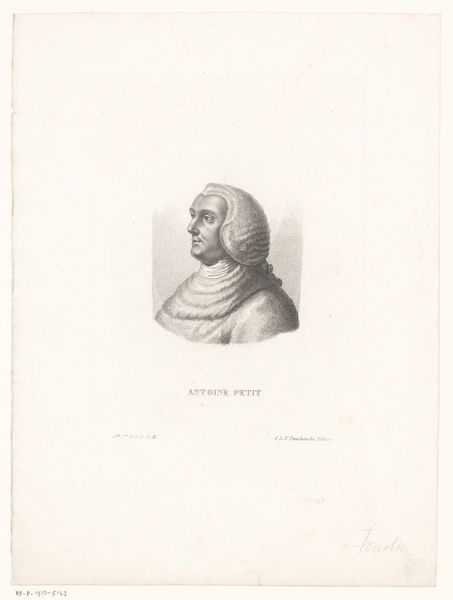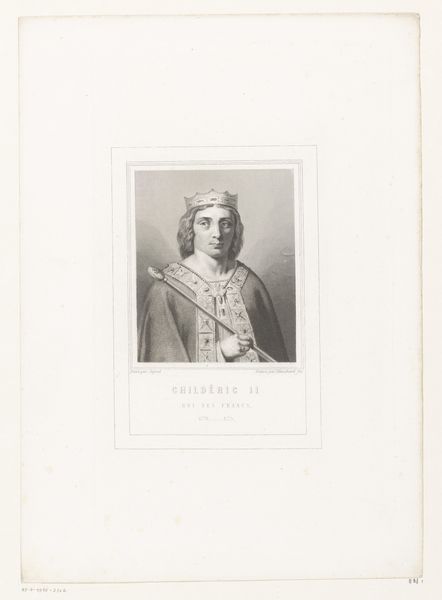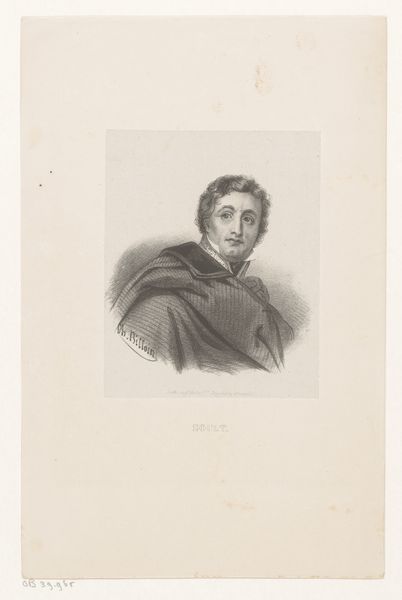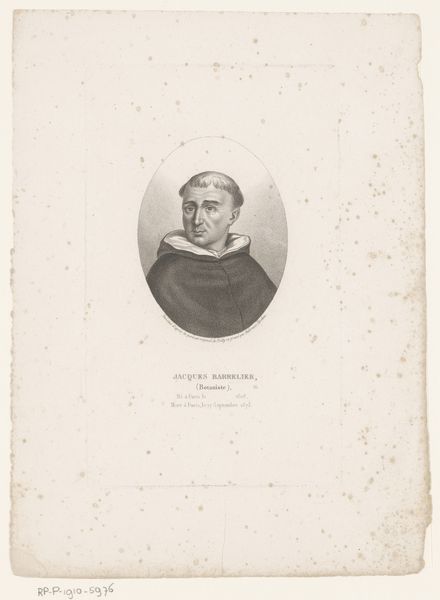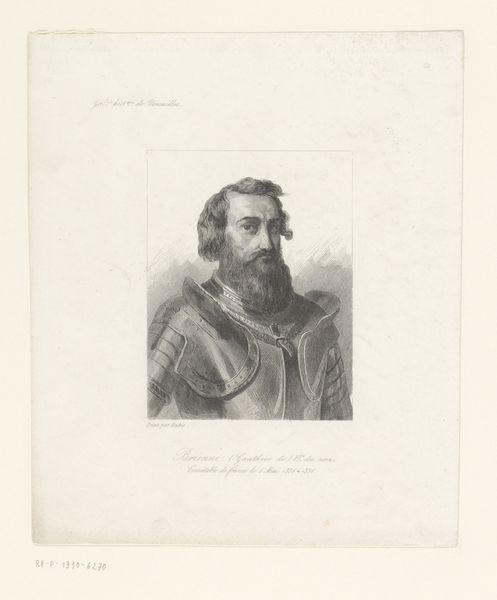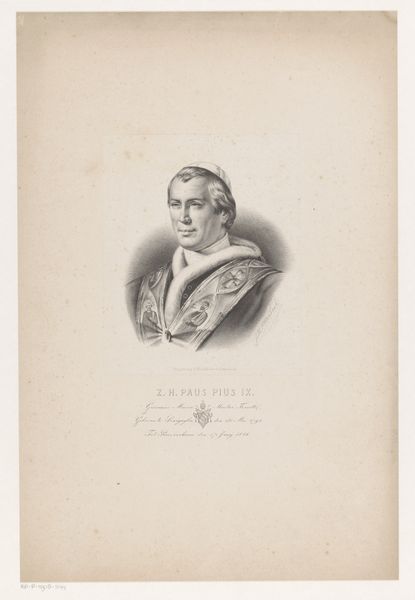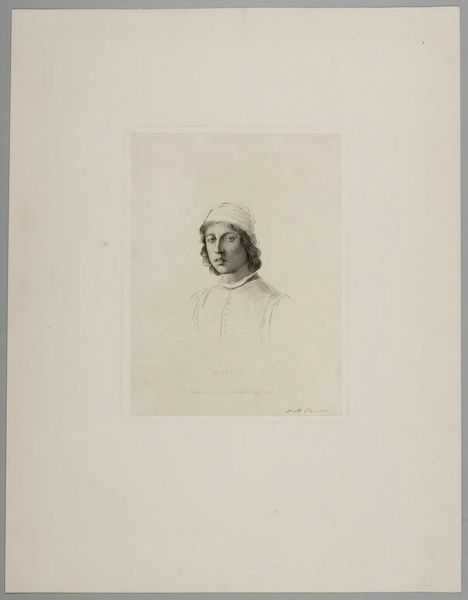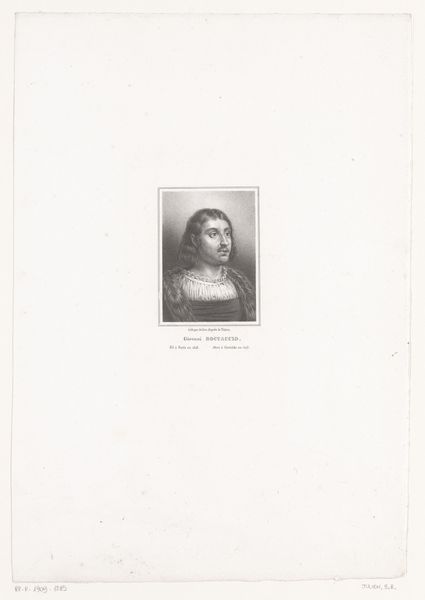
print, engraving
#
portrait
# print
#
history-painting
#
academic-art
#
engraving
Dimensions: height 231 mm, width 184 mm
Copyright: Rijks Museum: Open Domain
Editor: This engraving from 1838-1841 is a portrait of Henri I Clément by Joseph Rebell. The sharp lines give him a distinguished look, but there's also a stiffness that I find a bit...detached. How does its historical context shape how we should understand this depiction? Curator: It's crucial to recognize the socio-political lens through which such historical figures were presented. Consider that these prints were often commissioned and circulated to solidify or promote particular narratives about the past. Who was the intended audience, and what message might this image have been crafted to convey about leadership, nobility, or national identity at that time? Editor: So, it's less about accuracy and more about projecting an image? Is there something we can interpret from his garment or emblem? Curator: Precisely. The depiction of historical figures, especially through print media which allowed for wide dissemination, served very specific purposes. Notice the careful detailing of his garment and the prominent emblem. What could those signify within the context of 19th-century society reflecting upon its past? Does the artistic style itself evoke any specific historical associations? Editor: It almost feels staged or idealized. Maybe to harken back to a romanticized era of nobility and leadership. Curator: And who benefits from that romanticization? Consider how power is constructed and reinforced through such representations. Does it align with the political climate of the period in which the print was created? These details allow us to unpack the image beyond just a likeness, but as an artifact loaded with cultural significance. Editor: It's interesting to think how much these prints contributed to historical narratives at the time. I definitely have a different perspective now on how such images can actively shape how we perceive the past. Curator: Exactly! And that understanding enables us to engage more critically with the narratives they construct and perpetuate. It is always an insightgul opportunity to consider their contemporary role in historical perception.
Comments
No comments
Be the first to comment and join the conversation on the ultimate creative platform.
